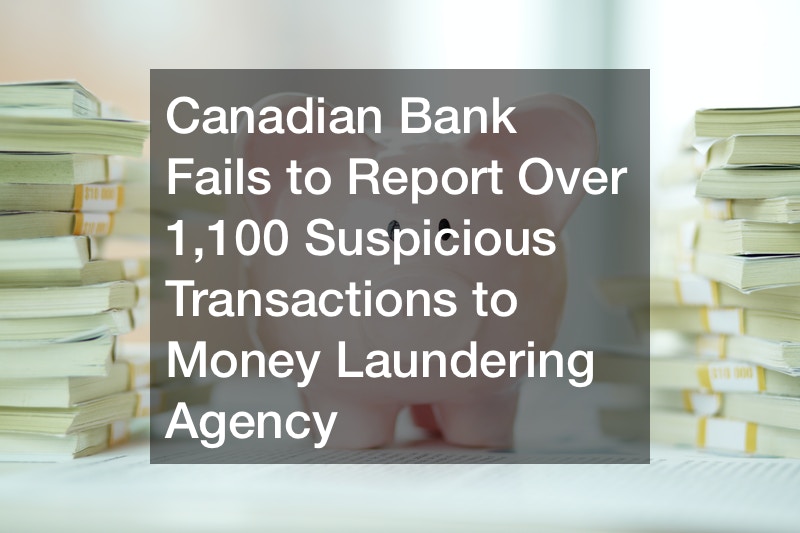Canadian Bank Fails to Report Over 1,100 Suspicious Transactions to Money Laundering Agency

 Promoting crime and corruption, money laundering has been known to slow down the economic growth of countries. Combating money laundering can be challenging because you will find it is related to other illegal activities like selling illicit drugs. So, someone will be laundering money because they are trying to cover up money they have obtained illegally. Criminals make it hard for the authority to track down the money source through a process called layering. Some money laundering layering examples include; investing in legitimate businesses like real estate, converting the money to financial instruments like bonds, life insurance, and stocks, wiring funds in and out of offshore bank accounts and between countries, and reselling any products of high value like artwork or jewelry.
Promoting crime and corruption, money laundering has been known to slow down the economic growth of countries. Combating money laundering can be challenging because you will find it is related to other illegal activities like selling illicit drugs. So, someone will be laundering money because they are trying to cover up money they have obtained illegally. Criminals make it hard for the authority to track down the money source through a process called layering. Some money laundering layering examples include; investing in legitimate businesses like real estate, converting the money to financial instruments like bonds, life insurance, and stocks, wiring funds in and out of offshore bank accounts and between countries, and reselling any products of high value like artwork or jewelry.
Money laundering laws and regulations ensure that there is as minimal laundering of money as possible. In collaboration with financial institutions, the authorities monitor customer transactions and deposits to ensure the customers are not part of a money laundering scheme. Most government authorities have an anti-money laundering policy to curb it. The policy will insist that all financial institutions keep thorough records of their customer’s transaction activities. Also, they need to flag any account that they notice some suspicious activities.
 A Canadian bank has been fined $1.15 million for failing to report suspicious transactions in a breach of anti-money-laundering law.
A Canadian bank has been fined $1.15 million for failing to report suspicious transactions in a breach of anti-money-laundering law.
The nation’s money-laundering agency, Fintrac, is refusing to name the bank guilty of this violation, but since there are only 72 banks in the entire country, it may not be too difficult to figure out.
Between early 2012 and the end of 2013, the bank processed 1,179 international electronic transfers of $10,000 or more. The client used a “potential shell company” and operated out of an undisclosed country. The bank also accepted 45 cash deposits of more than $10,000 each without reporting any of these transactions to Fintrac, as required by law.
This is reportedly the first and only time a Canadian bank has ever been penalized for this offense, and the number of unreported transactions is shocking to many financial experts, some of whom suspect that bank employees may have been conspiring with the client.
“This is a remarkable failure of governance at a major financial institution,” said Richard Leblanc, a professor of corporate governance at York University. “It’s shocking that this would occur.”
In addition to censoring the bank’s identity, Fintrac has also refused to release the name of the client. However, the dates and activities reported directly correspond with those of a convicted felon named Andrew Strempler.
Strempler, an online pharmacy entrepreneur, pleaded guilty to mail fraud in the U.S. after shipments were discovered to contain counterfeit medication. This in itself is a serious crime since counterfeit medications can be dangerous. During 2014, more than 47,000 people died as a result of fatal drug overdoses, some of
which were related to prescription drugs.
Strempler did his time in a minimum-security prison in Manitoba and was released in October of last year.
The bank, which allowed Strempler to move more than $12 million without once reporting to Fintrac, is not facing criminal charges because, according to Fintrac spokesperson Darren Gibb:
“There … needs to be the criminal intent — we believe — on the part of the entity, so that a charge can be brought forward. So in this case, we determined that an administrative monetary penalty was the most appropriate course of action.”
In other words, investigators found no evidence that bank employees were conspiring with Strempler. Rather, the bank is simply guilty of non-compliance with reporting requirements under money laundering law.






